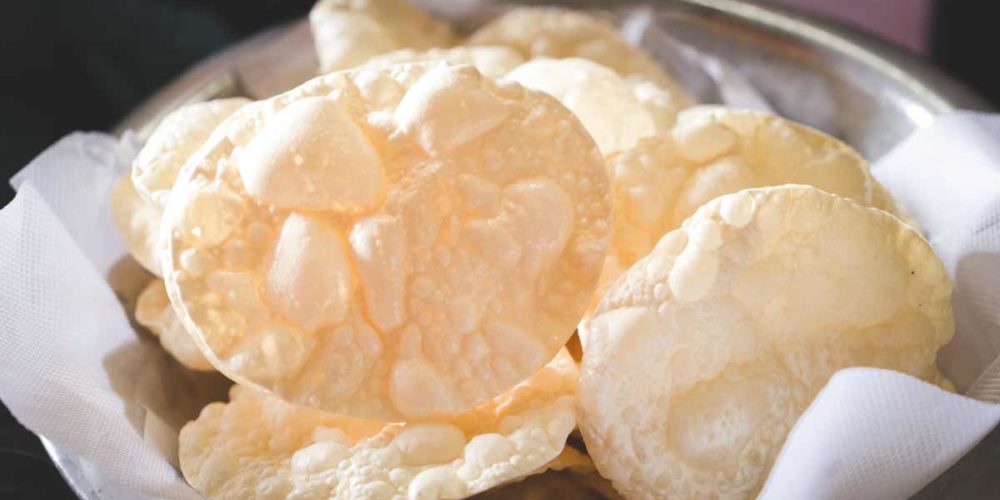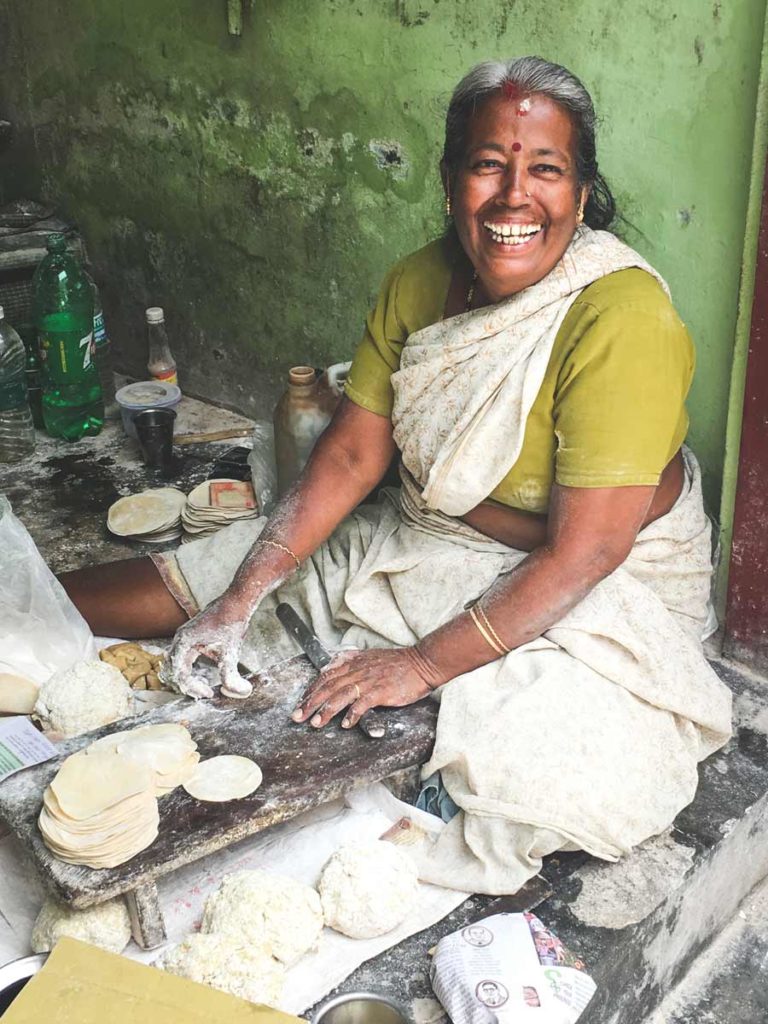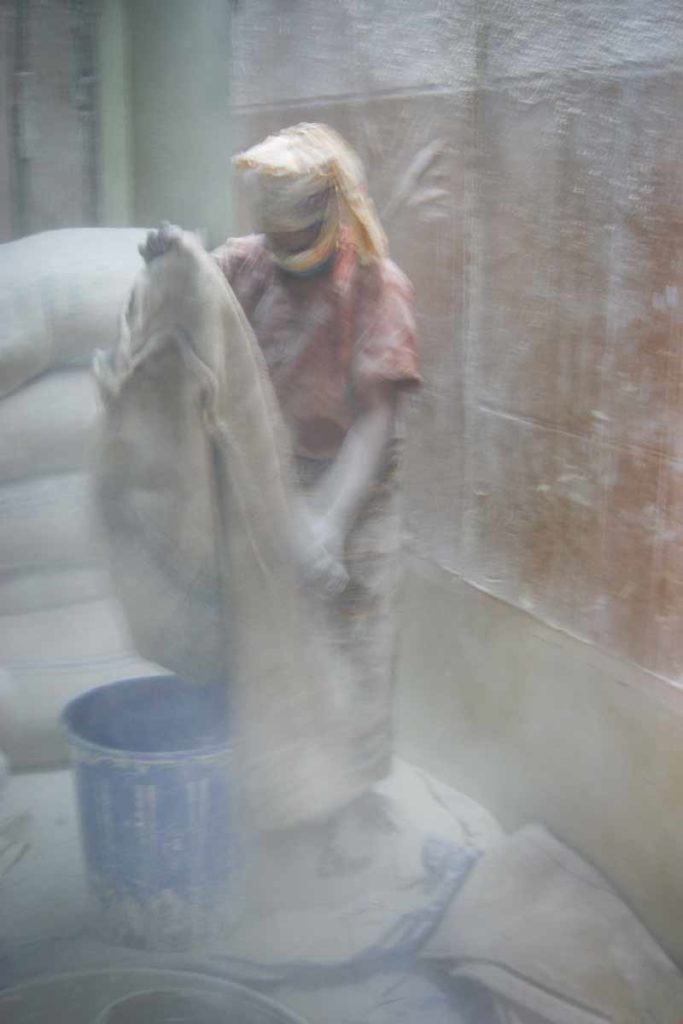Thin, crisp, round flatbread, papadam (papads) are typically made from seasoned dough of black gram (urad dal) flour. They’re either fried or cooked with dry heat (usually flipping over an open flame).


For many years, when we’ve wanted to make papadam at home, we simply picked up a package at our local Indian grocer, brought them home and fried them up. Standing by the stove, dipping them in hot oil, waiting a few seconds for them to magically puff up, we never once thought about where or how they were made.
We always imagined Indian home cooks would make their own papadam. But, in India, just like here in Canada, cooks typically buy them ready-made and dried for convenient storage. There is quite an art to making and drying papadam.
Enter Usha
Usha has been making papadam her whole working life. She started as a young girl alongside her mother. When Karen first met Usha in 2012, her mother was still in the shop. Now, Usha is training her own daughter. It was a delight to reconnect in 2016.
Usha’s shop is about 10 feet square. It’s located on Bazaar Street in Kochi’s spice market district. That might sound very small but, depending on how busy she is, Usha’s shop usually spills out onto the street. She mixes the dough up in the back but sits on the door frame when it comes time to roll out the papadam.



First, she grabs a small chunk of dough and rolls it into a ball between her hands. Then, she uses a small wooden block as the table for her rolling pin to glide the dough into perfect spheres. She smiles and chats completely in sync with her rhythmic rolling.
After years and years of practice, the spheres are all exactly the same size and thickness. Usually, once formed, they’re laid out in stacks on the street to dry in the hot sun. Usha’s papadam are so tasty that orders from local families and restaurants keep her busy. But Usha is not the only one in Kochi making papadam.
Papadam (papads) and Empowerment
Karen has also visited a Kochi women’s empowerment project with a much larger scale production. Their papadam are packaged and shipped far and wide. At this factory, the women work from 5 a.m. until 11 a.m. Then, they go home to shop, cook, clean and care for their families.
It sounds grueling but, if you look at their faces, you’ll see smiles all round. They’re proud to have these jobs – even though it’s not easy when it’s your turn to mix the flour to make the papadam. That’s a complete dust storm that sees the mixer emerge coated from head to toe.
Work for Women
We’ve learned that it’s especially important for women to obtain these jobs because it’s been shown that when a woman gets a pay cheque, typically 100 percent of her money goes to caring for her family. Conversely, when men get a pay cheque in South India, on average, only 50 percent of the money goes to the family. Sadly, women are paid only 60 percent of what men get paid – even when doing the same job.

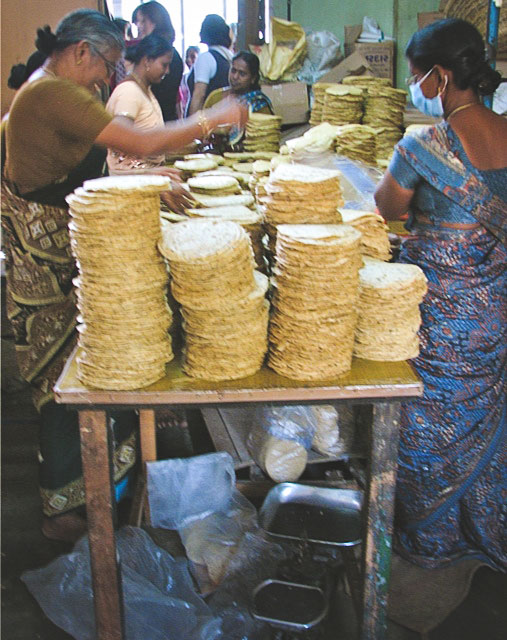
We’ve seen the Taj Mahal, The Golden Temple, The Amber Fort, The City Palace of Jaipur, The Lake Palace of Udaipur, the Himalayas, the spice jungles and backwaters of Kerala, the ghats of Varanasi and the Beach Temples of Mamallapuram. But for us, nothing beats visiting people changing their own destinies, and that of their families, through the work they do in empowerment projects like this papadam factory.
Does our touring the projects make a difference? YES. Are we just gawkers? Absolutely not.
We convey our genuine interest in the plight of our fellow human beings and mutual shyness melts into friendship. There are smiles all around by the time we leave. We support the commerce of the industry they’re undertaking by making purchases. Occasionally, we might contribute to something the group needs to carry on or go to the next level in their plan. A visit to an empowerment project allows the visitor to learn directly from artisans and workers; to see past poverty to the dignity in the work, and to show respect for the women’s efforts to provide for their families.



Someday soon
Usha is an independent business woman. Maybe someday soon, the women who gain skills by participating in an empowerment project will be too. And in the meantime, while someone can’t help everyone, everyone can help someone. That’s reason enough to get to know the faces behind these places and plates of papadam. And, if you’re like us, you’ll never eat a papadam (papads) again without thinking about where it might have come from.
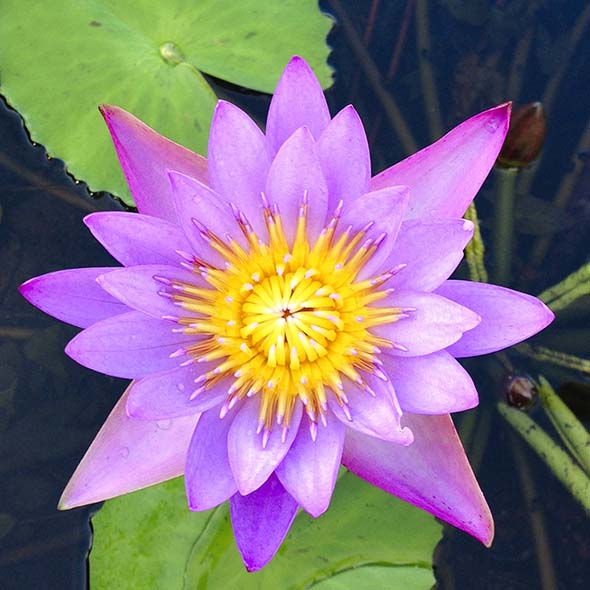
Gratitude
Thank you to the KTM Society and Travel XS for sponsoring our travel throughout South India in 2016.
All words and photos are our own and were not shared with the sponsors before publication.

